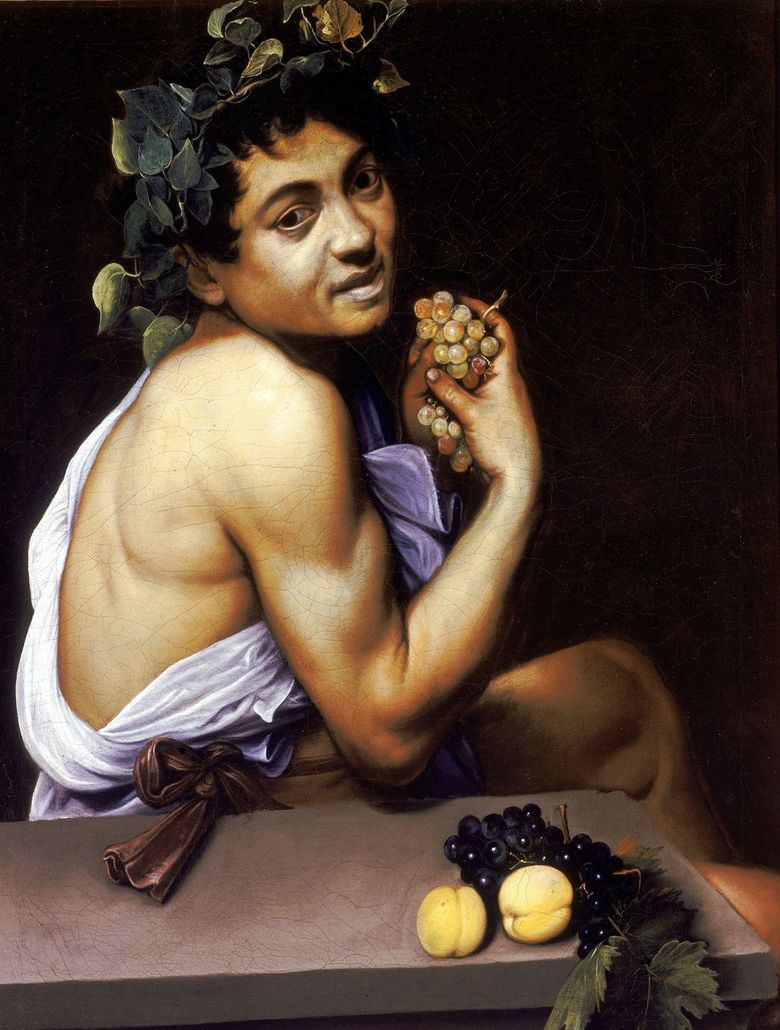
The first signs of drama, which marked the mature painting of Caravaggio, manifested itself in this picture, written after his stay in the hospital. After a long time between life and death, he often turned to this state in his canvases. But while the theme of the frailty of being young Caravaggio beat with humor: himself, still not recovered from a serious illness, as seen through pale skin, a greenish complexion, the weakness of the hand holding a bunch of grapes, he introduced In the image of Bacchus.
The Greek god of wine and fun sits in the same outfit in which the painter will depict him a couple of years later in a painting now in the Uffizi Gallery: a white cloak is grabbed by a dark belt tied with a bow. But if Bacchus on the canvas of the Uffizi is depicted healthy, blooming and inviting plays the end of his sash, then this one is weak and does not think of teasing or amusing anyone.
On his head is a withered wreath half-woven, not woven from grape leaves at all, as it should be. And it’s not Bacchus at all, but the mortal who dressed them. Life as it is, with its sufferings, human weakness and its attempts to save itself, is the theme that eventually became the leading in Caravaggio’s work. The real drama unfolded then on his canvases. While he was joking over the earthly nature of man and thus tried to at least slightly rise above it.
 Bacchus by Michelangelo Merisi and Caravaggio
Bacchus by Michelangelo Merisi and Caravaggio The sacrifice of Isaac by Michelangelo Merisi and Caravaggio
The sacrifice of Isaac by Michelangelo Merisi and Caravaggio Schulers by Michelangelo Merisi and Caravaggio
Schulers by Michelangelo Merisi and Caravaggio St. John the Baptist by Michelangelo Merisi and Caravaggio
St. John the Baptist by Michelangelo Merisi and Caravaggio Bacchus malade – Michelangelo Merisi da Caravaggio
Bacchus malade – Michelangelo Merisi da Caravaggio Narcissus by the stream by Michelangelo Merisi da Caravaggio
Narcissus by the stream by Michelangelo Merisi da Caravaggio Fruit Basket by Michelangelo Merisi and Caravaggio
Fruit Basket by Michelangelo Merisi and Caravaggio Fortune-teller by Michelangelo Merisi da Caravaggio
Fortune-teller by Michelangelo Merisi da Caravaggio